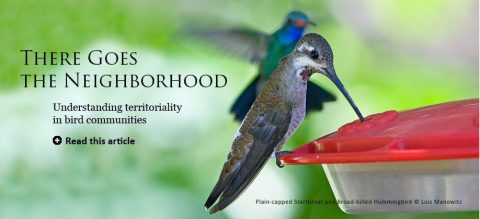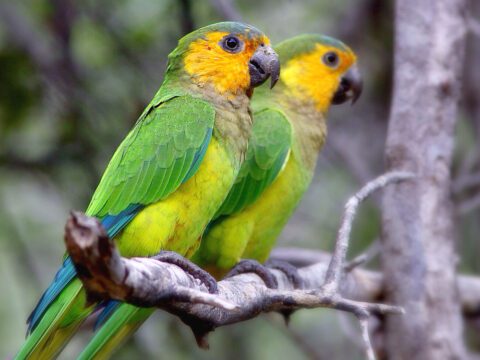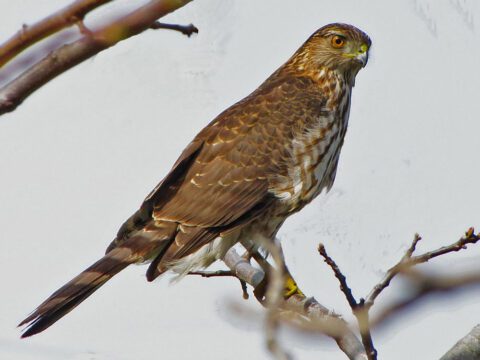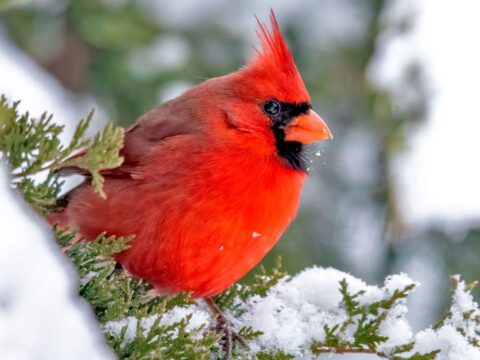Great Expectorations: Snow Petrel Nests Stand the Test of Time
By Hugh Powell
April 15, 2011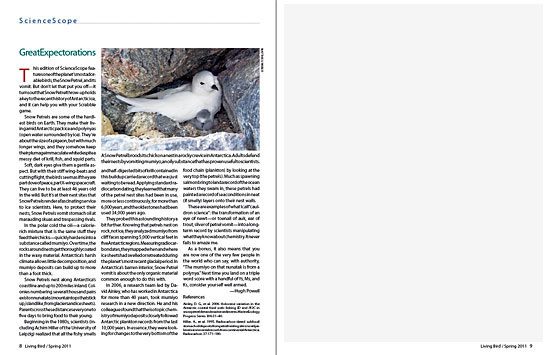
This edition of ScienceScope features one of the planet’s most adorable birds, the Snow Petrel, and its vomit. But don’t let that put you off—it turns out that Snow Petrel throw-up holds a key to the recent history of Antarctic ice, and it can help you with your Scrabble game.
Snow Petrels are some of the hardiest birds on Earth. They make their living amid Antarctic pack ice and polynyas (open water surrounded by ice). They’re about the size of a pigeon, but with much longer wings, and they somehow keep their plumage immaculate white despite a messy diet of krill, fish, and squid parts.
Soft, dark eyes give them a gentle aspect. But with their stiff wing-beats and cutting flight, the birds seem as if they are part dove of peace, part X-wing spacecraft. They can live to be at least 46 years old in the wild. But it’s at their nest sites that Snow Petrels render a fascinating service to ice scientists. Here, to protect their nests, Snow Petrels vomit stomach oil at marauding skuas and trespassing rivals.
In the polar cold the oil—a calorie-rich mixture that is the same stuff they feed their chicks—quickly hardens into a substance called mumiyo. Over time, the rocks around nests get thoroughly coated in the waxy material. Antarctica’s harsh climate allows little decomposition, and mumiyo deposits can build up to more than a foot thick.
Snow Petrels nest along Antarctica’s coastline and up to 200 miles inland. Colonies numbering several thousand pairs exist on nunataks (mountaintops that stick up, islandlike, from glaciers and ice sheets). Parents cross these distances every one to five days to bring food to their young.
Beginning in the 1980s, scientists (including Achim Hiller of the University of Leipzig) realized that all the fishy smells and half-digested bits of krill contained in this buildup carried a record that was just waiting to be read. Applying standard radiocarbon dating, they learned that many of the petrel nest sites had been in use, more or less continuously, for more than 6,000 years, and the oldest ones had been used 34,000 years ago.
They probed this astounding history a bit further. Knowing that petrels nest on rock, not ice, they analyzed mumiyo from cliff faces spanning 5,000 vertical feet in five Antarctic regions. Measuring radiocarbon dates, they mapped when and where ice sheets had swelled or retreated during the planet’s most recent glacial period. In Antarctica’s barren interior, Snow Petrel vomit is about the only organic material common enough to do this with.
In 2006, a research team led by David Ainley, who has worked in Antarctica for more than 40 years, took mumiyo research in a new direction. He and his colleagues found that the isotopic chemistry of mumiyo deposits closely followed Antarctic plankton records from the last 10,000 years. In essence, they were looking for changes to the very bottom of the food chain (plankton) by looking at the very top (the petrels). Much as spawning salmon bring to land a record of the ocean waters they swam in, these petrels had painted a record of sea conditions in neat (if smelly) layers onto their nest walls.
These are examples of what I call “cauldron science”: the transformation of an eye of newt—or toenail of auk, ear of trout, sliver of petrel vomit—into a long-term record by scientists manipulating what they know about chemistry. It never fails to amaze me.
As a bonus, it also means that you are now one of the very few people in the world who can say, with authority, “The mumiyo on that nunatak is from a polynya.” Next time you land on a triple word score with a handful of Ys, Ms, and Ks, consider yourself well armed.

All About Birds
is a free resource
Available for everyone,
funded by donors like you
American Kestrel by Blair Dudeck / Macaulay Library
